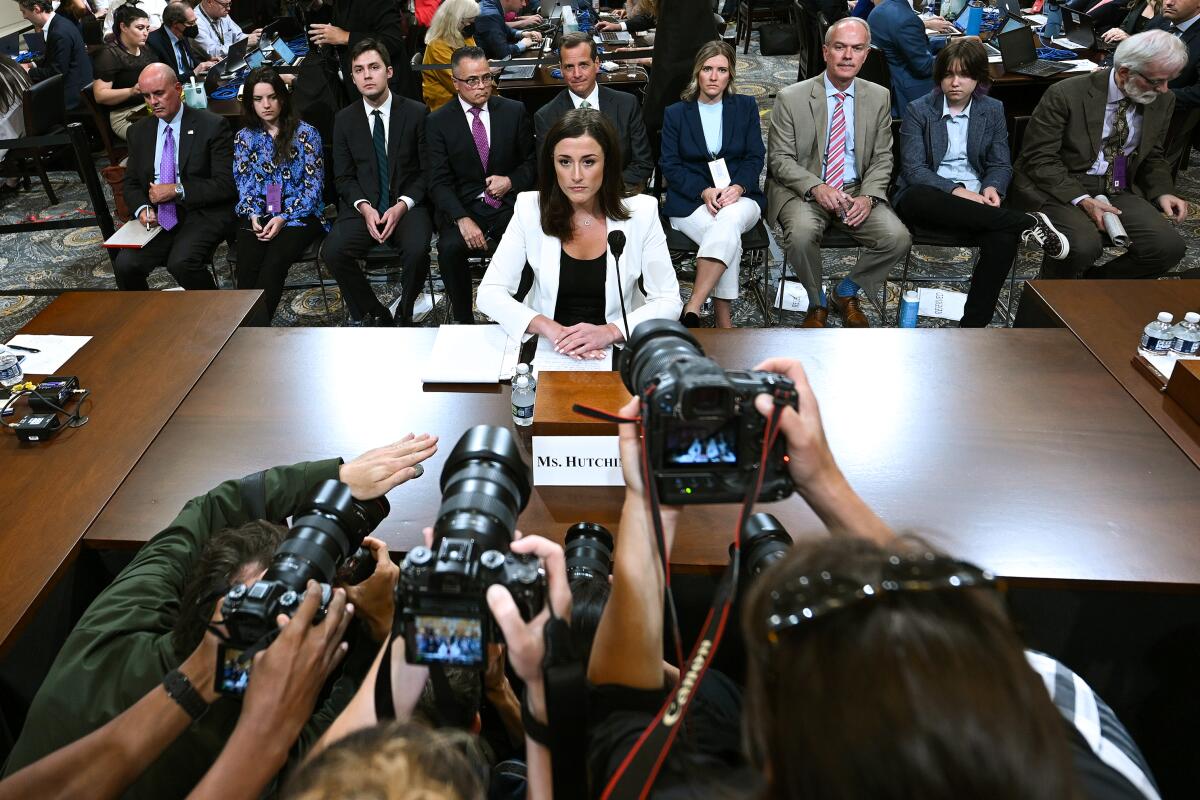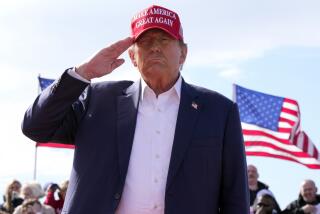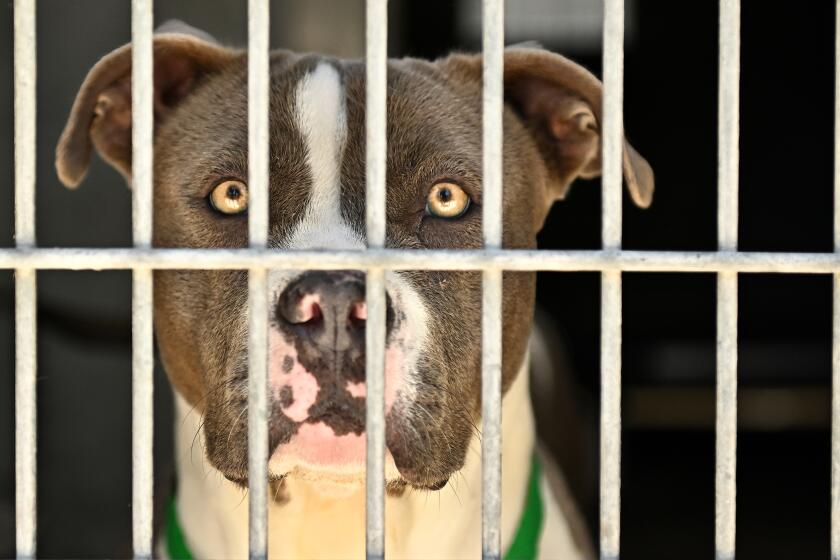Column: There is a gap in the evidence we’ve seen against Trump. We have to rely on the DOJ to fill it

- Share via
The criticism of the Department of Justice continues to grow: Detractors see the department as too far behind the Jan. 6 committee. They want to know why Atty. Gen. Merrick Garland and the Justice Department have yet to come forward with a serious criminal charge against Donald Trump.
These gloomy observations miss at least one crucial point: There is a gap in the committee’s development of the Jan. 6 evidence for the most serious yet fitting charge against Trump. And it seems likely that only the Justice Department can fill it.
First, remember that the Justice Department may be much further along than we know; its work initially is always largely opaque. And the department has also had its hands full dealing with hundreds of on-the-ground rioters, as well as investigating false elector schemes and other possible crimes connected to the 2020 election and committed by figures in the former president’s inner circle.
It’s also important to bear in mind the fundamentally different tasks of the department and the committee. The House hearings aim to present a general narrative of Team Trump’s attempt to undo President Biden’s victory, along with the facts to back it up. The Justice Department, on the other hand, needs to develop a legal case consisting of admissible evidence proving criminal guilt beyond a reasonable doubt, and if possible beyond Republican cavil as well.
What crime exactly? Here’s another important difference between the department’s task and Congress’. The committee’s work has given rise to a sort of parlor game of “name that Trump crime” among commentators, everything from manslaughter to destruction of federal property. That won’t cut it for the Justice Department.
Even assuming that the department could prove any number of offenses on the part of Trump, Garland would not take the unprecedented step of prosecuting a former president unless the charge involved a grave crime against the U.S. Most likely, that charge would be seditious conspiracy. It’s the most serious of any leveled so far against those involved in the insurrection attempt, and for most Americans, it captures the fundamental evil that Trump has wrought.
In the federal criminal code, seditious conspiracy is defined, in part, as two or more people agreeing to “oppose by force” the government’s authority or agreeing “by force to prevent, hinder, or delay the execution of any law of the United States.” It doesn’t matter if they succeed; the crime is in the agreement.
Since Cassidy Hutchinson’s testimony in the June 28 hearing, Trump has looked to be a moving force, if not the moving force, in the deadly melee at the U.S. Capitol. Before we heard Hutchinson‘s descriptions of the president’s words and deeds leading up to the riots, we might have concluded that the source of the violence was confined to mob spontaneity and the machinations of domestic terrorists and militia leaders.
But no more. And yet, although with Hutchinson’s account, and that of other witnesses, the committee has presented ample, even voluminous, evidence of Trump’s role in the events of Jan. 6, to date it has produced only circumstantial evidence of the all-important element of an agreement between Trump and a co-conspirator.
The “will be wild” Trump tweet inviting his followers to Washington; Stephen K. Bannon’s declaration that “all hell” would “break loose” on Jan. 6; and Rudolph W. Giuliani’s statement to Hutchinson on Jan. 2 that Jan. 6 would be wild, seconded by White House Chief of Staff Mark Meadows, all speak to the likelihood but not the certainty that Trump conspired with one or more persons to “prevent, hinder or delay” Congress’ certification of the election.
It’s theoretically possible to prove a case of seditious conspiracy based on circumstantial evidence, but we can be sure that won’t be enough for the prosecution of a former president. Absent a major new revelation from the committee, we must rely on the Justice Department to supply the critical agreement element.
The traditional, and most effective, way for prosecutors to nail a charge against someone like Trump would be to leverage the cooperation of an alleged co-conspirator — in this case, a Giuliani, Bannon or Meadows, perhaps — with a promise of immunity. The department has that kind of power; a congressional committee does not.
Within its brief, the Jan. 6 House Select Committee has done a splendid job. It has given the country a fighting chance at having an official chronicle of the many schemes that together make up Trump’s sinister undertakings between the 2020 election and its certification in Congress.
But it will take more than a simple handoff of the committee’s findings to the Justice Department to set up a successful prosecution of Trump and his cronies.
The Justice Department’s critics are wrong to conclude that Garland’s work has been done for him in Congress, much less to upbraid him for not having already brought charges against the former president. Garland deserves the presumption that, as promised, he is going after insurrectionists “at all levels,” and that the department will do the heavy lifting to induce a loyalist to turn on the former president.
Unless and until Garland succeeds, Trump, by virtue of the committee’s outstanding work, may stand guilty in the public’s mind and in the judgment of history, but there’s no holding him criminally accountable in a court of law.
More to Read
A cure for the common opinion
Get thought-provoking perspectives with our weekly newsletter.
You may occasionally receive promotional content from the Los Angeles Times.











